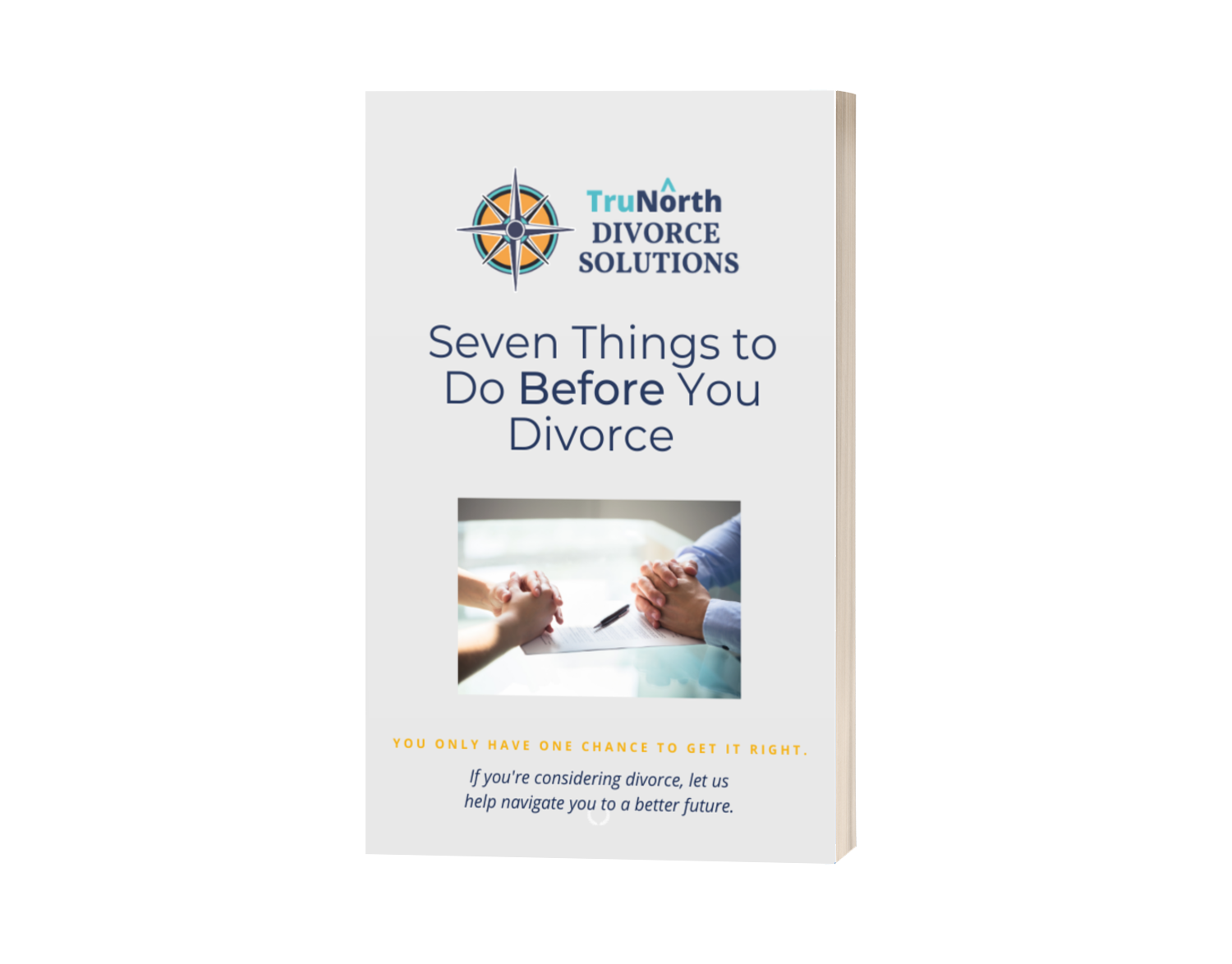SEVEN THINGS TO DO BEFORE YOU DIVORCE
Get Our FREE eBook!

Alimony is but one financial aspect of divorce and there are many for which you should have a qualified divorce financial professional review.
Alimony is a generic term that actually refers to two types of support payments made by the higher earning spouse to the lesser earning spouse:
Alimony in Maryland must be awarded before the divorce decree is issued. Alimony awards are almost always rehabilitative, i.e., temporary. On rare occasions, e.g., when a spouse is disabled or too old to enter the workforce, an alimony award may be indefinite. Courts look at many factors when determining if alimony should be granted, especially the ability of the lesser-earning spouse to be wholly or partly self-supporting and how long it will take for him or her to get the necessary education or training to be self-supporting. Standard of living, length of marriage, and a number of other items may also be considered. The People’s Law Library of Maryland has a “quiz” to help you determine the likelihood of an alimony award in your specific divorce. Access it here: Maryland PPL Alimony Quiz.
There is no formula for alimony in the state of Maryland and alimony awards are not dependent on whether child support will be paid. However, the American Academy of Matrimonial Lawyers (AAML) has developed guidelines and a calculator for states that do not have their own.
Alimony Buyouts
The vast majority of men and women view alimony with disdain—who wants to have to write a check to their ex-spouse month after month? Likewise, does anyone like waiting for and worrying about the monthly check they’re expecting from their ex? What happens if the payor dies, loses their job, or becomes disabled? Is he or she going to be obsessing about whether their ex is cohabitating with a new partner? One alternative is to add an offset to the distribution of the assets equal to the present value of the expected alimony payments. So long as there are sufficient assets to cover the amount, this is a win-win for both parties and eliminates the ongoing angst of monthly payments.
Read more on divorce financial considerations here.
Get A free Consultation
484.321.6990
hello@trunorthdivorce.com
Alimony in Pennsylvania is but one financial aspect of divorce. There are many which you should have a qualified divorce financial professional review.
Alimony is a generic term that actually refers to three types of support payments. They are made by the higher earning spouse to the lesser earning spouse:
Spousal support and alimony pendente lite are calculated in the same way. Alimony in Pennsylvania is determined by a number of factors but it is often calculated with the same formula.
No Minor Children: Spousal support and alimony pendente lite is calculated before child support. It is based on net income. If there are no children, the amount is the difference between 33% of the obligor’s (higher earning spouse’s) and 40% of the obligee’s (lower earning spouse’s) net income. For example,
Obligor’s Monthly Net Income is $15,000; 33% is $5,000
Obligee’s Monthly Net Income is $10,000; 40% is $4,000
Difference = $1000 = Monthly Support
With Minor Children: The same basic formula but the percentages are changed to 25% and 30%, respectively. To illustrate,
Obligor’s Monthly Net Income is $15,000; 25% is $3,750
Obligee’s Monthly Net Income is $10,000; 30% is $3,000
Difference = $750 = Monthly Support
Additionally, there will be a separate amount calculated for child support that will be added to the monthly alimony.
Many courts use the formulas above. These amount may be modified based on a number of factors, the most important of which are:
How long alimony will be paid is a discretionary decision that is based on the factors above. The rule of thumb, though, is 1 year for every 3 years of marriage. So, if a couple has been married for 20 years, the lesser earning spouse would expect to receive alimony for 6 – 7 years. If, however, if the lesser earning spouse is near retirement at the end of that period, the court may extend until he or she is able to collect Social Security and/or access retirement funds.
The vast majority of men and women view alimony with disdain. Who wants to have to write a check to their ex-spouse month after month? Likewise, does anyone like waiting for and worrying about the monthly check they’re expecting from their ex? What happens if the payor dies, loses their job, or becomes disabled? Is he or she going to be obsessing about whether their ex is cohabitating with a new partner? One alternative is to add an offset to the distribution of the assets equal to the present value of the expected alimony payments. So long as there are sufficient assets to cover the amount, this is a win-win for both parties and eliminates the ongoing angst of monthly payments.
Read more on divorce financial considerations here. Alimony in Pennsylvania It can be a messy affair and a CDFA, like those at TruNorth Divorce Solutions, can help you sort out the details.
Get A free Consultation
484.321.6990
hello@trunorthdivorce.com